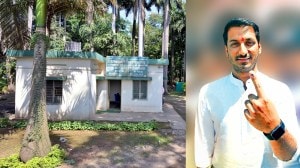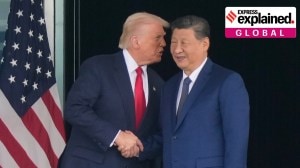An economic black hole
In last year’s Budget speech, Finance Minister P. Chidambaram observed that “all subsidies will need to be targeted at the poor an...

In last year’s Budget speech, Finance Minister P. Chidambaram observed that “all subsidies will need to be targeted at the poor and the truly needy”. Following this announcement, the National Institute of Public Finance and Policy was commissioned to do a study. According to its report, that was submitted to the finance ministry, not only are central government subsidies more than twice as large as generally acknowledged, they also go largely to sectors that have no business being on the government’s priority list. The report showed that petroleum, food and fertiliser subsidies are the three biggest guzzlers accounting for 95 per cent of the Rs 46,869 crore subsidy in the last budget. However a bigger subsidy that is ignored in the budget figures is the uncovered cost of goods and services provided by the government. The total government subsidy in ’02-’03, including such subsidies was Rs 1,15,824 crore in ’03-’04.
Elementary education, primary healthcare, disease control, nutrition, soil and water conservation and environment are identified as sectors which the government should subsidise. However, only Rs 6,775 crore of subsidies went to these Merit I services in ’03-’04. The next class of services, the Merit II services, includes sports and youth services, urban development, agricultural research, rural development programmes, small industries and oceanographic research. These received Rs 41,799 crore in
’03-’04. The bulk of the subsidies went to non-merit goods like food, fertiliser and petroleum products.
Recently, Prime Minister Manmohan Singh revealed that the Department of Economic Affairs had been asked to formulate a national policy on subsidies which would identify target groups, subsidy norms and an exit policy for subsidies which are inconsistent with the policy. Chidambaram must take this forward in Budget ’05. The biggest battle may be the food subsidy which is now at Rs 25,800 crore. This subsidy serves to push up prices of foodgrains in the open market. It discourages farmers from diversifying the crops they grow, it mainly benefits only five of the richest states and it harms the environment. In ’99-’00, this bill stood at Rs 9,434 crore. In just five years, it rose three times to Rs 25,800 crore. Much of the subsidy goes into the minimum support price at which the government buys grains from farmers. This is based on the recommendations of the Commission on Agricultural Costs and Prices. In recent years, the purchase price has been consistently higher than the recommended support price. There is clearly a need for an exit policy for the food subsidy. A test of this government’s commitment to target subsidies to the poor will be this one big item. Until now it is only smaller subsidies such as those on the EPF interest rate that have been addressed. The big challenge lies in the food subsidy. Will the government deliver?



- 01
- 02
- 03
- 04
- 05




























